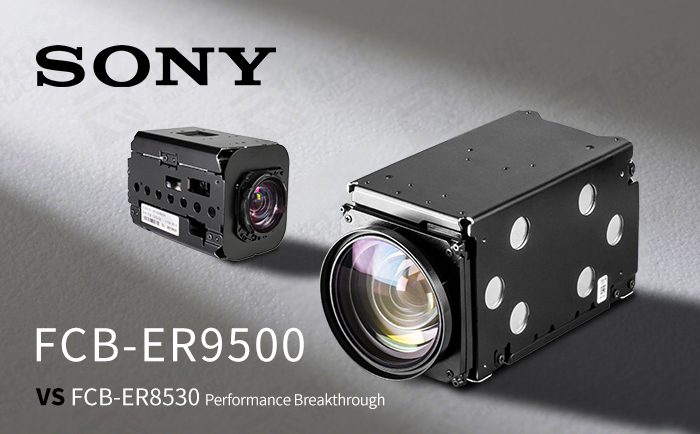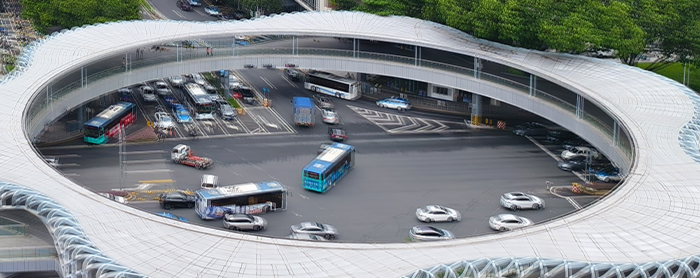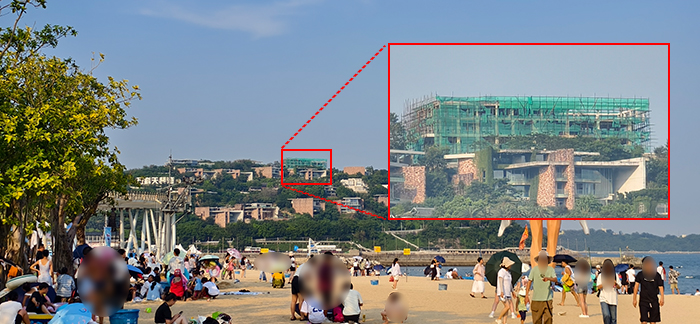Compared with the Exmor R of the FCB-ER8530, the STARVIS2 CMOS sensor equipped in the SONY FCB-ER9500 has achieved significant upgrades in dynamic range, low-light performance, HDR technology and near-infrared sensitivity, making a qualitative breakthrough in dealing with complex environments.

I. Dynamic range and sensitivity improvement
The dynamic range of a single exposure has been enhanced
The dynamic range of STARVIS2 in a single exposure is significantly enhanced compared to Exmor R. This means that in scenes with strong contrast between light and dark (such as backlit or environments where strong light and shadow interweave), both highlights and dark details can be retained simultaneously, overexposed or underexposed areas can be reduced, and the overall layering of the picture can be enhanced.
Color imaging under extremely low illumination
Minimum illuminance: STARVIS2 can still output color images in nearly dark environments. The minimum illuminance of SONY FCB-ER9500 can reach 0.00016lx, while that of the Exmor R of FCB-ER8530 is around 0.006Lx, significantly enhancing its light-sensing capability.
Back-illuminated structure optimization: Inheriting the back-illuminated pixel technology, by optimizing the structure of the photodiode, the photon capture efficiency is further enhanced, resulting in lower noise and more realistic color reproduction in low light.

Ii. Innovation in HDR Technology: Clear HDR Function
1.Solve the problem of motion artifacts
The first-generation STARVIS only supported DOL HDR (combining light and dark images through time difference), and shooting high-speed moving objects would cause chromatic aberration or artifacts.
STARVIS2 has added the Clear HDR function: it can simultaneously capture images of bright and dark areas with different gains and then synthesize them in real time, completely eliminating motion blur and chromatic aberration. It is especially suitable for dynamic scenarios such as drone inspection and traffic monitoring.
2.Wide dynamic range (WDR) enhancement
The Exmor R CMOS sensor of SONY FCB-ER8530 neither supports DOL HDR function nor Clear HDR function.
The FCB-ER9500, which adopts the STARVIS2 CMOS sensor, has a significantly enhanced wide dynamic range with dual support for DOL HDR and Clear HDR functions, and has a stronger ability to restore details under complex lighting conditions.
Iii. Near-infrared (NIR) Performance Upgrade
The sensitivity in the infrared band has been enhanced
Compared with the Exmor R of SONY FCB-ER8530, the STARVIS2 of SONY FCB-ER9500 has enhanced the light-sensing capability in the near-infrared band of 850-1000nm. In a completely dark environment, when combined with infrared supplementary lighting, it can output low-noise, high-definition NIR images, while the first generation has more obvious noise under the same conditions.

Iv. Other Key Improvements
Color reproduction and contrast: The backlit structure of SONY FCB-ER9500’s STARVIS2, combined with a new algorithm, can maintain high color saturation and contrast even in low light conditions.
Compatibility expansion: Supports higher-level functional integration, such as zonal independent 3A (autofocus/exposure/white balance), which can precisely lock onto the target area in complex lighting conditions (for example, focusing the wound during surgery without strong light interference).
Summary
STARVIS2 has addressed the technical bottlenecks of the previous generation of sensors in high-speed motion scenarios, complex lighting, and extreme low light conditions through four major innovations: a leap in dynamic range and sensitivity, Clear HDR anti-counterfeiting, full-color imaging in extremely low light, and near-infrared enhancement. With this sensor, SONY’s FCB-ER9500 has achieved a qualitative change in high-quality imaging in complex environments in high-end scenarios such as security, medical care, and drones.
 Sony FCB camera block
Sony FCB camera block